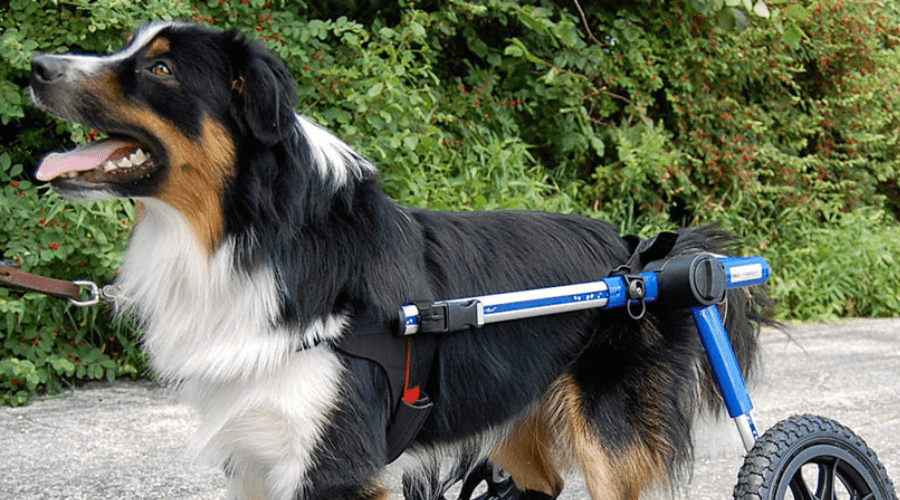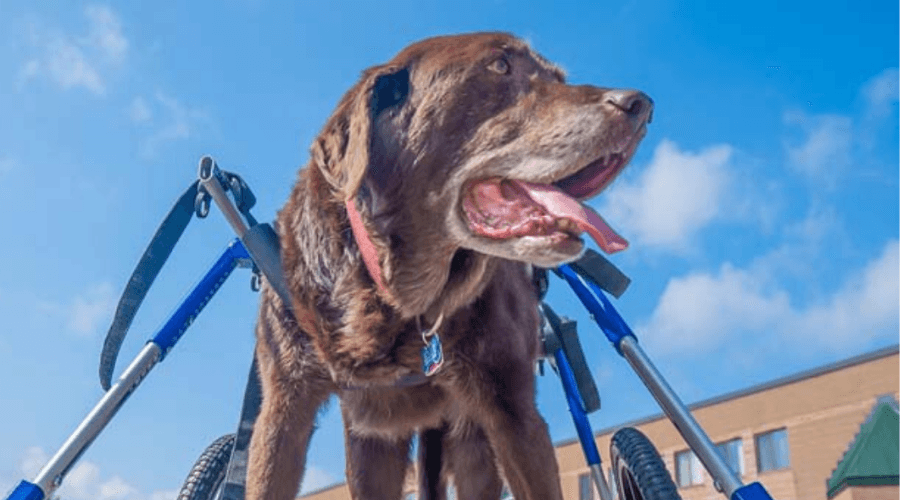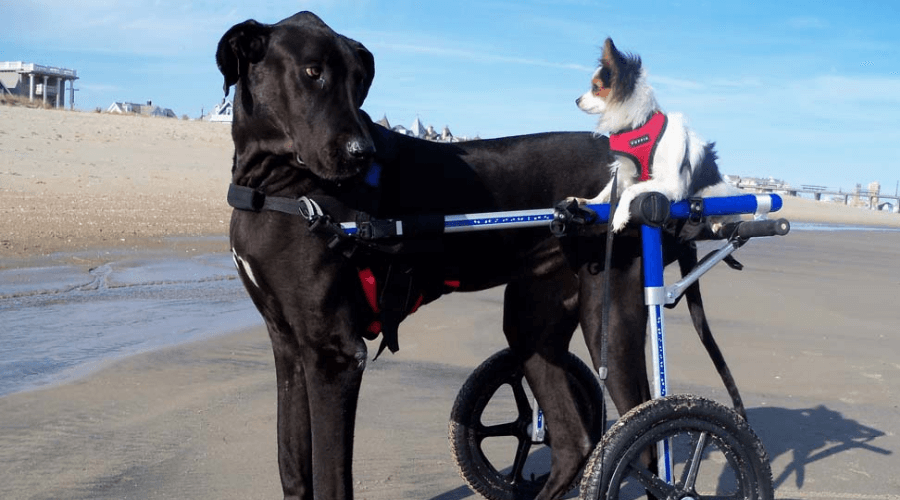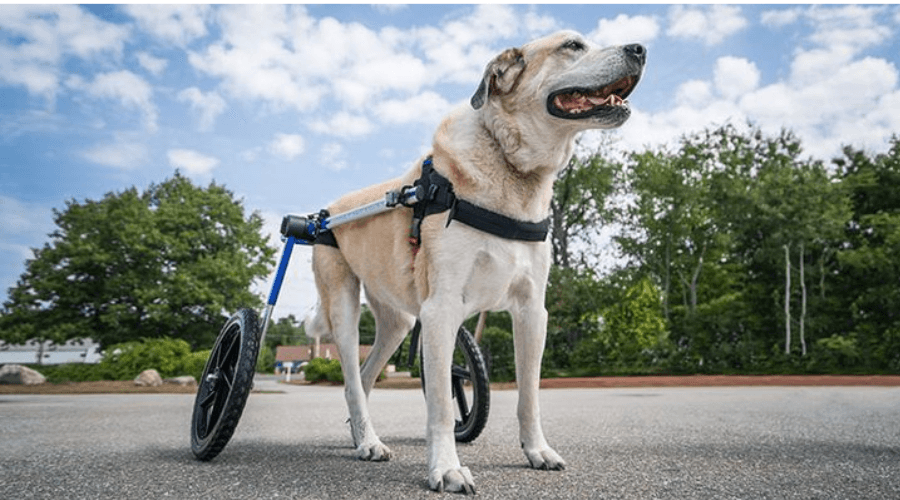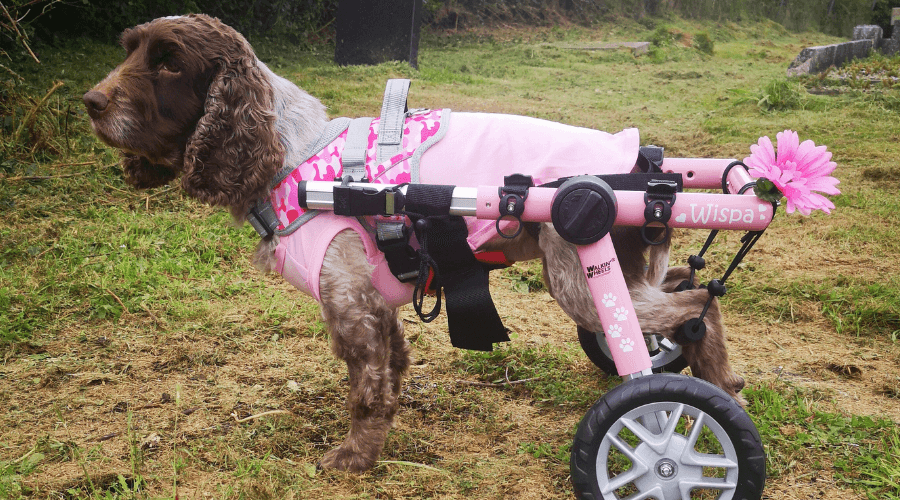Are dog wheelchairs a good idea?
Are dog wheelchairs a good idea?
Dog wheelchairs can be a game-changer for our furry friends with mobility issues. They offer a new lease on life, enabling dogs to move around freely and independently.
But are dog wheelchairs a good idea? This question comes up for dog owners who are wondering if a wheelchair will help their dog thrive despite a disability or illness. The answer, however, isn't a simple yes or no.
It depends on various factors, including your dog's specific needs, size, and overall health condition. The type of wheelchair, its size, and its features also will influence a decision.
We would like to explore their purpose, different types, and how to select the right one in this article.
We'll also discuss their practical benefits, training tips, maintenance, and cost considerations so you can consider whether this alternative option is a good idea for your dog.
Understanding Dog Wheelchairs
Dog wheelchairs, also known as dog carts or wheels for dogs, they are mobility aids designed to support dogs with various health conditions. They are essentially exactly as the name implies a frame with wheels attached, which your dog wears to move around.
These wheelchairs can be a lifeline for dogs with injuries, disabilities, or age-related mobility loss. They can be used for both temporary and permanent mobility support, depending on your dog's condition.
The key to their effectiveness lies in their design. Most dog wheelchairs are adjustable and can be customized to fit the dog's size and weight. They are designed to allow dogs to perform natural movements, including going to the bathroom.
Here are some key features to look for in a dog wheelchair:
- Adjustable size and fit
- Lightweight and durable materials
- Comfortable padding
- All-terrain wheels
- Easy to clean and maintain
The Purpose of Dog Wheelchairs
They help dogs regain their mobility and independence. This can significantly improve their quality of life, especially for dogs who were once active and playful.
They also play a vital role in rehabilitation. By encouraging movement and exercise, wheelchairs can aid in recovery from injuries or surgeries.
They provide support to weakened areas, preventing further injury and promoting healing.
Types of Dog Wheelchairs
Dog wheelchairs come in various types to cater to different needs. The three main types are small dog wheelchairs, large dog wheelchairs, and wheelchairs for front legs.
Each type has its unique features and benefits:
- Small dog wheelchairs: Lightweight and designed for smaller breeds
- Large dog wheelchairs: Sturdier with additional support for heavier dogs
- Wheelchairs for front legs Quad full support: Designed for dogs with front limb weakness or paralysis
Dog Wheelchairs Sizes
Small dog wheelchairs are designed specifically for smaller breeds. They are lightweight, making it easier for small dogs to move around. There are also Mini dog wheelchairs designed for toy breeds.
These wheelchairs are often adjustable, allowing for a perfect fit for your small furry friend.
You can also get wheelchairs designed for specific small and medium breeds, for example Corgi wheelchairs and Dachshund wheelchair because their torso measurements are unique.
Large Rear Dog Wheelchairs
Large dog wheelchairs, on the other hand, are built to support heavier dogs. They are typically sturdier and have additional support features.
Despite their robust construction, they are designed to be comfortable and easy for the dog to use.
Dog Wheelchairs for Front Legs
Dog wheelchairs for front legs are a bit different. They are designed for dogs with front limb weakness or paralysis and are called Quad wheelchairs as they have both the front and rear support.
These wheelchairs support the front body, allowing the dog to use their rear legs to move around and propel them forward.
Selecting the Right Wheelchair
Choosing the right wheelchair can be tricky. It's not just about the size, but also the type of wheelchair that suits your dog's specific condition. You will need to measure them and compare the dimensions to the wheelchair specifications. This ensures the rear wheelchair can support your dog’s weight.
Here are some factors to consider:
- The dog's weight, width, and length
- The type of disability or injury
- The dog's lifestyle and activity level
- The environment where the wheelchair will be used
The goal is to enhance your dog's mobility, so they can thrive. More info here and our guide to choosing the right wheelchair
Sizing and Adjustability
A wheelchair that's too big or too small can cause discomfort and even harm to your dog.
Most manufacturers provide sizing charts to help you choose the right size. It's important to measure your dog accurately and follow these guidelines.
Adjustability is a key feature. An adjustable wheelchair can be customized to fit your dog perfectly and help for a smooth transition and acceptance of the wheelchair.
Material and Comfort Considerations
The material of the wheelchair affects its durability and weight. Aluminium and stainless steel are commonly used due to their strength and lightweight properties.
Comfort is equally important. Look for wheelchairs with foam padding for extra comfort. Some models also feature all-terrain wheels for active dogs that enjoy outdoor activities.
Lastly, consider the ease of cleaning. A wheelchair that's easy to clean will be more hygienic and comfortable for your dog in the long run.
Practical Benefits and Rehabilitation
- They can significantly improve the quality of life for dogs with mobility issues, whether due to injury, disability, or age-related conditions.
- Wheelchairs can aid in rehabilitation. By encouraging movement and exercise, they can help strengthen weakened areas and prevent further injury. Build and maintain muscle tone.
- They can extend the active life of a dog, allowing them to continue enjoying their favourite activities despite their mobility challenges.
- This increased independence can have a profound impact on a dog's mood and overall well-being. It allows them to explore their environment, interact with other pets, and engage in play, just like they used to.
Training and Adaptation
Introducing a dog to a wheelchair requires patience and understanding. It's a new experience for them, and they may initially be hesitant or scared.
It's essential to gradually introduce the wheelchair to the dog to ensure a positive experience. This process should be done in a calm, familiar environment to minimize stress.
Every dog is different. Some may adapt quickly, while others may take more time.
Introducing Your Dog to a Wheelchair
Start by letting your dog sniff and explore the wheelchair. This helps them get used to its presence and smell.
Next, try fitting the wheelchair on your dog without moving it. Reward them with treats and praise to create positive associations.
Gradually increase the time your dog spends in the wheelchair. Start with short sessions and slowly extend them as your dog becomes more comfortable.
Training Tips for Success
Training a dog to use a wheelchair may take time and patience. It's important to go at your dog's pace and not rush the process.
Use positive reinforcement techniques, such as treats and praise, to encourage your dog. This helps them associate the wheelchair with positive experiences.
Monitor your dog for any signs of discomfort or skin irritation from the wheelchair. Adjustments may be needed to ensure a proper fit and comfortable use.
Read more on how to train your dog to use a wheelchair.
Maintenance and Care
Regular maintenance of the wheelchair improves its longevity and your dog's comfort. This includes checking for loose screws and cleaning the wheels, especially after outdoor use. This helps prevent the buildup of dirt and rust, which can affect the wheelchair's performance. Use a mild detergent and a soft cloth for cleaning the frame.
Ensure the wheelchair is always in good condition. Any damage or wear and tear should be addressed promptly to prevent further issues.
Regular Check-ups and Adjustments
Regular check-ups with a veterinarian are necessary to assess your dog's progress and wheelchair fit. The wheelchair may need adjustments over time as your dog's condition changes.
It's also important to monitor your dog's overall health and prognosis when deciding on wheelchair use. Regular vet visits can provide valuable insights into this.
Cost and Considerations
The cost of dog wheelchairs varies depending on the features and customization. It's an investment towards the rest of your dog's quality of life. It is a one time purchase and if well maintained should be good quality for the long run.
Dog wheelchairs generally have a good resale value. Some organisations and charities would appreciate donations like Winston Wheels, so you can play it forward to dogs in need.
Investment and Insurance
Some insurance companies may cover the cost of a wheelchair in certain cases.
It's worth checking with your pet insurance provider about this. They may require a veterinarian's prescription or endorsement for the wheelchair. Well made quality dog wheelchairs will include a warranty from the manufacturer.
Rental Options
For short-term wheelchair needs, rental options are available. This can be a cost-effective solution for temporary mobility support. This option also allows you to confirm if your dog will enjoy and accept the wheelchair.
Join the Facebookgroup Dogs on Wheels for rental options, helpful advice and support.
Conclusion and Recommendations
Dog wheelchairs can significantly improve your dog's physical and mental wellbeing. Ít may be worth giving your dog a chance to use one as the reward and benefit is high.
Choose the right size and type of wheelchair for the dog's specific condition. You can contact us with your dog breed and weight, and we will guide you. We recommend consulting you’re your Vet before purchasing a wheelchair.
The wheelchair is not to replace other forms of therapy or medical treatment but compliment and assist in maintaining your dog’s general health and mobility.
Browse All Dog Wheelchairs
 British Pound
British Pound

